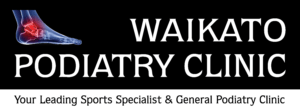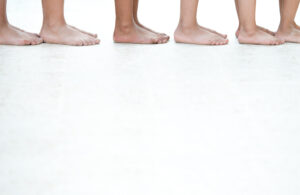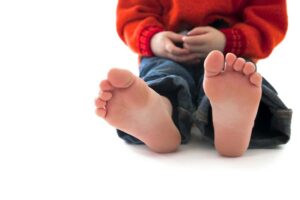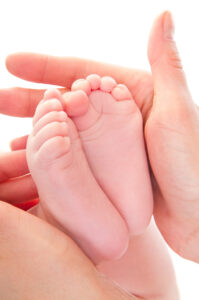Help for Children’s Flat Feet
What is Flat Feet?
This is a condition which commonly presents in children and adolescents. Foot shape and posture are mostly genetic and therefore mostly hereditary. At Waikato Podiatry Clinic, we assess every child individually with the aim of providing care that can improve foot function and posture, while addressing any concerns you may have around this. If pain is present in flat feet, this isn’t normal and should be addressed.
How do I know if my child has problem flat feet?
The affected child often appears to have an excessively flat foot, particularly during standing and exercise. The back of their heels may appear to have a rolled in appearance, as their heel strikes the ground while they’re walking. They may look different to their peers, and start to dislike running as they feel fatigued and awkward, and may be more likely to be clumsy and trip. Growth plate injuries or pain are not growing pains, and shouldn’t be treated as such. Growing pains are a separate condition that occurs in children. They may develop heel pain (Severes disease), knee pain, hip pain, shin pain (growing pains), and discomfort at the navicular bone/posterior tibial tendon insertion.
What might be the cause?
No single cause can be identified; research indicates that certain things can make your child more susceptible to having this condition such as: genetic predisposition (blame the grandparents!), very flexible joints, foetal development. There are also specific foot related conditions such as club feet, congenital vertical talus,
tarsal coalition, down syndrome, and various neurological conditions.
 How can it be treated?
How can it be treated?
The important thing for us is to make a baseline assessment, to see whether it is a fixed or flexible problem, and where on the normal curve your child or foot type sits. We use a series of tests to identify the severity of the problem. It may be a case of continual annual monitoring of what we term “supervised neglect”. This is an important aspect of a vigilant monitoring of the asymptomatic (painless) child who has been identified as a potential candidate for predisposed injury but is not currently suffering from any pain or discomfort.
Pain Reduction
A thorough education around the stages of growth in assessment of where your child sits on the spectrum can often be helpful. Pain management and reduction can be achieved by many factors, including:
- Footwear prescription.
- Stretching (often hamstrings, calves). Muscles are often delayed in keeping up with bone growth, so tightness can occur and cause problems.
- Strengthening exercises – small feet and large leg muscles and tendons need to be balanced and strong as well as flexible.
- Simple footwear modifications are often
used: - Prefabricated orthoses (sometimes)
- Custom made orthoses (occasionally)
 Long Term Solution
Long Term Solution
As with most conditions getting the correct diagnosis is extremely important for a timely and successful
treatment. If you are concerned you can get peace of mind by having a thorough assessment. Most children are
much more flexible than adults and therefore, their arch/foot is more prone to collapsing or distorting on
weightbearing and walking. Part of this is developmental. The foot doesn’t develop all of it’s stability structures until six or seven years of age. Even after this age growth plates will continue to be active. The presentation of tiredness from running, complaints of sore feet, and a sometimes clumsy gait can present with children suffering from flat feet, as well as other musculoskeletal conditions such as growing pains. They will tend to over pronate (roll in) as they walk and this can affect the knee position and posture. This causes the foot to function in an inefficient manner. Our podiatrists will support to improve function and pain when and if required. Often, if the child is asymptomatic (painless), it may be a simple matter of footwear selection advice in combination with a stretching and strengthening programme. Research shows that insoles (orthoses) for asymptomatic or non-painful flat feet are not always required, as was previously thought. It is about knowing when to treat and when to
monitor for your child and your particular situation. Selection of appropriate footwear can also be particularly important in this group.
Still in Pain?
(Or are you not sure what is normal?) Growth plates are often an area of pain for children, these open at different ages at different locations. We’d love to help your child get back on their feet and doing what they love.
We have a track record of diagnosing and successfully treating cases that have previously proven difficult to resolve and we’d love to help you get back on your feet doing what you love.
Call us or drop us an e-mail & we’ll get back to you as soon as possible to discuss your AT pain and some possible solutions. You can also book an appointment online.
Providing the people of Waikato with a centre of podiatry excellence



 How can it be treated?
How can it be treated? Long Term Solution
Long Term Solution
Hi my 11 year old has flat feet.
He has trouble in sports keeping his balance and falls over Abit while playing.
He also complains about sore legs and feet alot.
What should we do?
How much is a consultation
Hi Alana,
Thank you for the message.
We would recommend booking your son in for an appointment with us for a Bio Mechanical assessment.
We can take also look at his footwear and determine the best treatment plan going forward.
An Initial Consulation is $135.00 and is a 45 minute appointment or $155.00 with our Lead Podiatrist Andrew.
Feel free to give us a call also on 078380003 and we can get this booked in for you.
Kind Regards,
Baylee (Receptionist)